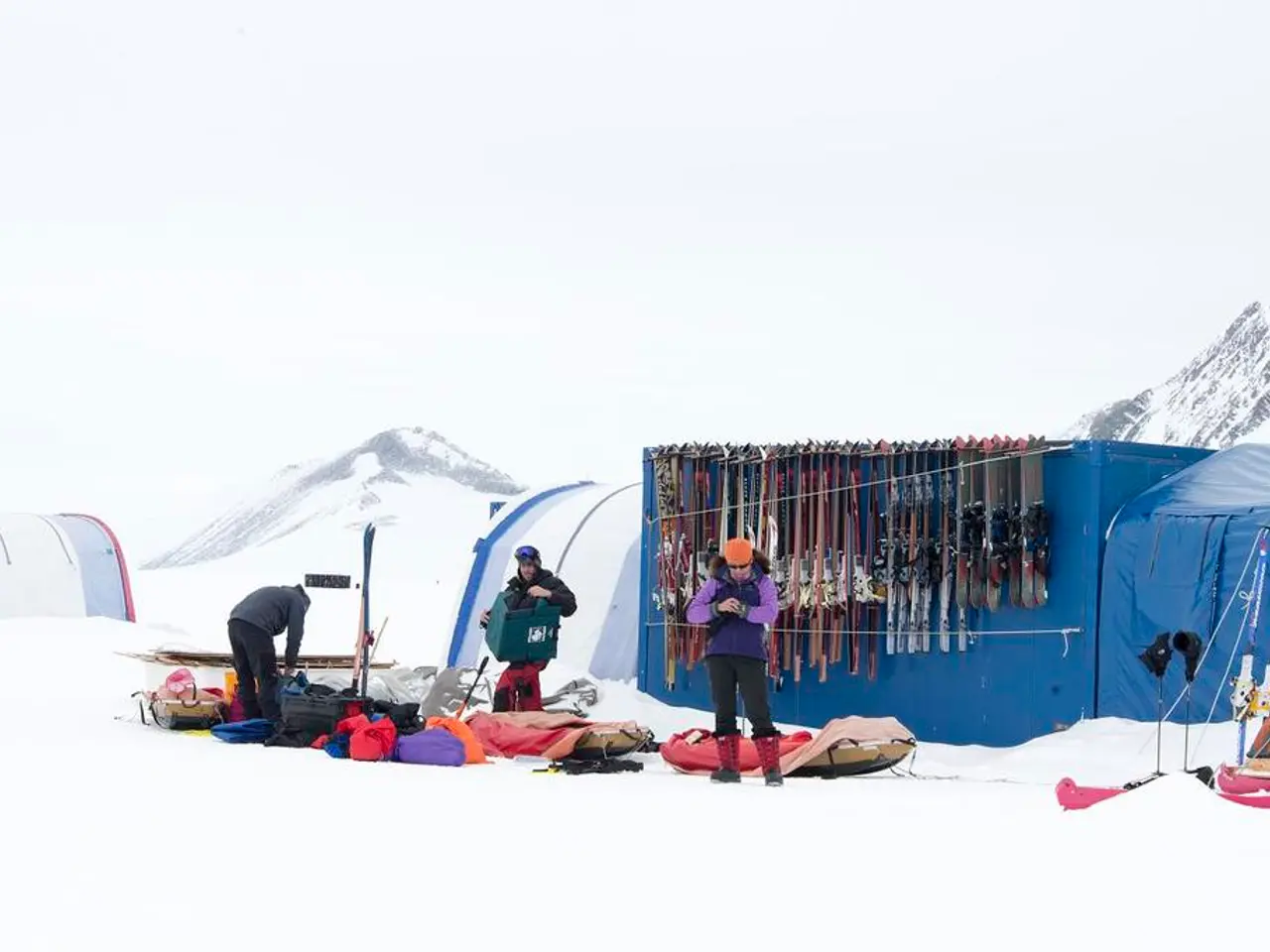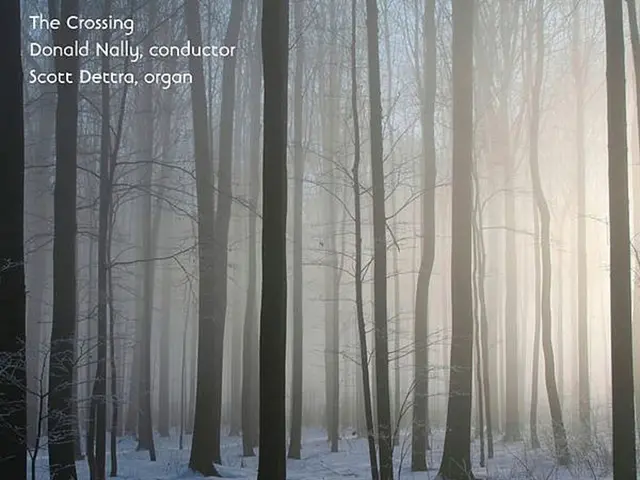Alert levels escalate in Juneau, Alaska, as catastrophic floods from massive glacier melting are forecasted
In the heart of Alaska, the Mendenhall Glacier has been causing a significant stir, releasing record-breaking floodwaters towards Juneau. According to emergency manager Ryan O'Shaughnessy, over 10,000 "Hesco" barriers are in place to protect more than 460 properties during an 18-foot flood event.
The current flood situation stems from a glacier lake outburst from Suicide Basin, a side basin within the Mendenhall Glacier. This event, which occurred on August 13, 2025, caused a major flood in the Mendenhall River, with water levels reaching a record peak of 16.51 feet. This surpassed the previous record flood stage of 15.99 feet set in 2024.
Peak flooding was expected around August 13, with official warnings issued for potential catastrophic flood impacts on Juneau. Residents along the flood zones were urged to evacuate due to rising water levels inundating roads and flood-prone areas. City officials warned against travel within the affected zones.
Following the August 13 flood peak, monitoring indicates that the basin has started to refill. The National Weather Service will maintain observation into the fall and provide updates as needed.
The flooding is a casualty of the warming climate and has been an annual concern since 2011, causing damage including the sweeping away of houses and swamping hundreds of homes. Last year, nearly 300 residences were damaged due to flooding.
The flooding event represents one of the highest recorded releases from Suicide Basin and is tracked continuously by the USGS and National Weather Service. Outburst floods are expected to continue as long as the Mendenhall Glacier acts as an ice dam to seal off the basin, which could span another 25 to 60 years, according to researchers.
To combat this, the U.S. Army Corps of Engineers is beginning a years-long process of studying conditions in the region and examining options for a more permanent solution, such as a levee. City officials have already installed a temporary levee along roughly 2.5 miles of riverbank to protect against widespread flooding.
The flooding happens when the water pressure from the basin forces its way under or around the ice dam created by the Mendenhall Glacier. During last year's flood, the flow rate in the Mendenhall River was about half that of Niagara Falls. A large outburst from the Mendenhall Glacier can release approximately 15 billion gallons of water, equivalent to nearly 23,000 Olympic-size swimming pools.
Juneau, home to 30,000 people, is located about 12 miles from the Mendenhall Glacier. Homes on the city's outskirts are near Mendenhall Lake and the Mendenhall River. Video posted on social media two years ago showed a home collapsing into the Mendenhall River due to flooding.
The University of Alaska Southeast and Alaska Climate Adaptation Science Center are researching the Mendenhall Glacier and its impact on flooding. The National Weather Service expects the flooding to peak around 8 a.m. to noon local time on Wednesday. Some residents in the flood zone have evacuated due to warnings. Authorities confirmed water escaping the ice dam on Tuesday, with flooding expected into Wednesday.
Despite the challenges, the community remains resilient, working together to manage this ongoing threat and ensure the safety of its residents.
Read also:
- Digestive issues: Understanding causes, remedies, and further details about acid reflux and excessive burping
- Exploring Botox as a Treatment for Interstitial Cystitis: Insights, Adverse Effects, and Further Details
- Risk Factors for Developing Penile Cancer
- Linking brain weakness and cognitive decline: An examination of the potential relationship





